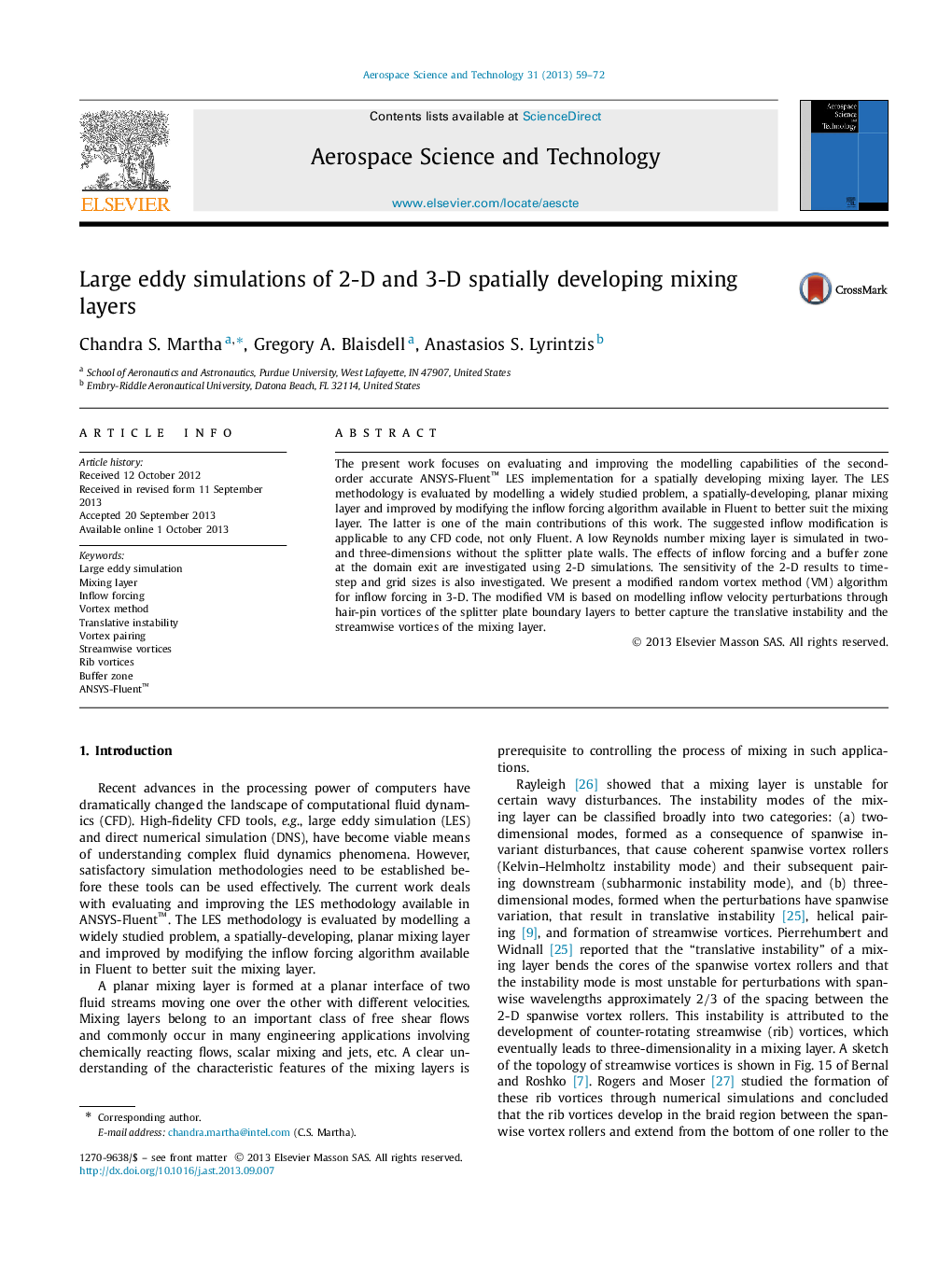| Article ID | Journal | Published Year | Pages | File Type |
|---|---|---|---|---|
| 1718186 | Aerospace Science and Technology | 2013 | 14 Pages |
The present work focuses on evaluating and improving the modelling capabilities of the second-order accurate ANSYS-Fluent™ LES implementation for a spatially developing mixing layer. The LES methodology is evaluated by modelling a widely studied problem, a spatially-developing, planar mixing layer and improved by modifying the inflow forcing algorithm available in Fluent to better suit the mixing layer. The latter is one of the main contributions of this work. The suggested inflow modification is applicable to any CFD code, not only Fluent. A low Reynolds number mixing layer is simulated in two- and three-dimensions without the splitter plate walls. The effects of inflow forcing and a buffer zone at the domain exit are investigated using 2-D simulations. The sensitivity of the 2-D results to time-step and grid sizes is also investigated. We present a modified random vortex method (VM) algorithm for inflow forcing in 3-D. The modified VM is based on modelling inflow velocity perturbations through hair-pin vortices of the splitter plate boundary layers to better capture the translative instability and the streamwise vortices of the mixing layer.
